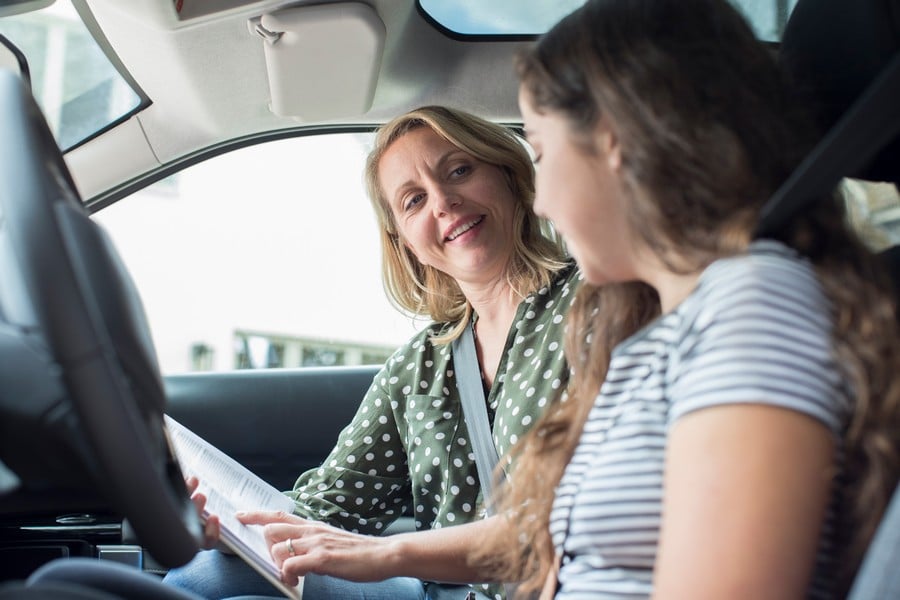
What’s the secret to passing the UK driving test? Many learners are in search of it, while others are aware of it already. So, how can you increase your chances of passing your driving test?
In reality, there is no secret. Ever. You have to practice, be determined, and most importantly have driving experience to pass your driving test.
We most often learn to drive over the course of a marathon rather than a sprint. You can, however, make your learning process go smoothly, and succeed at your driving test the very first time around.
Here are some tips to help you pass your driving test.
Tip 1: Drive a lot – then drive even more
Practice indeed makes perfect. You will become better at driving as you gain more hands-on experience.
After each driving lesson, discuss your progress with your instructor. Your next lesson should focus on those areas which you are finding tricky. Your next lesson should focus on those areas which you are finding tricky.
You can both stay on top of what you have learned and what needs to be improved by keeping a logbook with your instructor. Apps are also available that allow you to monitor your progress and improve in areas that need improvement.
So you can improve, you need to become adept at recognising your abilities and weaknesses. In general, students who are actively involved in their learning have a better sense of when a practical test is appropriate.
You’ll be able to improve your skills much more by practising with someone between lessons.
Tip 2: Get a good night’s sleep before your driving test
A good night’s sleep is essential for optimal performance. You won’t be able to concentrate and will be at a major disadvantage if you get up feeling tired.
Tip 3: Make sure you have your documents with you!
Each month, thousands of tests are cancelled due to people forgetting their documents when they arrive at the test centre. Please bring a valid UK driving licence as well as your theory test certificate.
You must provide the DVSA with the following information if you’ve lost your theory test pass certificate:
- Your full name
- Postal address
- Birthdate
- Licence Number
A letter will be sent to you, which you can use as an alternative to your pass certificate. Of course, a car is also necessary. During the test, you can also bring someone along. If you want to have the person with you for the overall result and feedback, they can be in the back of the car, but they may not cause any interference during the actual test.
Tip 4: Understand what to expect on your driving test
Practical driving tests consist of:
- A vision test.
- Safety questions: ‘Show me, tell me.’
- Performing reversal manoeuvres.
- Independent driving using a sat nav to get directions & driving for 20 minutes on your own.
There is an official DVSA guide detailing the process of taking a driving test.
Driving exams now include a “show me, tell me question”, autonomous driving, using a satellite navigation system and reverse manoeuvres. In the DVSA’s view, road collisions are the leading cause of death for young people, so these changes were made.
Tip 5: Be aware of what is coming up next and plan accordingly
In the same way that driving is unpredictable, the driving test is unpredictable as well.
As mentioned, there are several things you should take into consideration and not take for granted, such as people crossing. As zebra crossings do not have traffic lights, stay alert. Consider what’s next rather than just what you have to do now.
Adapt your driving style to the conditions and don’t assume you are the only vehicle on the road. If you cannot see around corners, go slowly and arrive with caution. Whenever there is visibility difficulty, for example, when approaching a closed intersection with a bin lorry, proceed slowly and be wary, rather than taking any chances.
Observation skills are crucial because they could save your life or another person’s life. Do not just think about how much space you need to squeeze into when meeting oncoming traffic, think about your escape route as well. Think ahead and always be prepared for the unexpected.
Be aware of any potential hazards and keep an eye out for them. Markings on the road and signs can assist you. You can check smaller repeater signs if you’re uncertain of the speed limit.
Be aware of signs well ahead of time so you can take action as soon as possible. Those who miss road markings and signage could accidentally turn onto a no-entry road, drive over the posted speed limit, or slow down too much when the speed limit goes up and you don’t notice it’s safe to speed up.
An excellent, safe driver needs to be well-aware and focused. Anticipate what may happen next and be prepared. Scan the area ahead of you as well as your mirrors for any possible hazards. Pay attention to your surroundings.
Tip 6: Do not automatically assume you failed the driving test
The mistake you make might ruin your day. Say, for instance, you stall your vehicle. Your mind starts to race. Where did I go wrong? I have certainly failed here. What is the point of trying again if you’ve failed?
You keep thinking about the mistake you made and then make even more serious errors because you can’t focus. The mistakes keep piling up, and you are ready to leave.
During the driving test, if you make an error, forget about it for the moment, move on, decide what to do next, and drive as you normally would.
If you make a mistake, don’t dwell on it and don’t let it cause you to give up or think you failed. The examiner may consider what you feel was a grave error to be a minor driving mistake.
Tip7: Don’t let the examiner’s actions distract you
On their lap is an iPad that the examiner might tap occasionally. Using this app, you cannot see what they are marking because it has a privacy screen. It wouldn’t be a good idea to peek into their work, as it could take your attention away from your primary task, which is to drive well.
You don’t always get bad taps from the examiner, so keep your head up and stay focused. While they may talk to you when they don’t have much to do, which may help you calm down, still keep your eyes on the road.
When the weather is bad or other distractions are present, it can be difficult to focus on what you must do.
Tip 8: Take deep breaths
Nerves at the time of a driving test are completely normal and indicate that you are extremely concentrated. Practice some relaxation techniques if you’re likely to feel nervous on test day.
Taking a deep breath is a simple but highly effective technique. When we become nervous, our breathing speeds up. The act of slowing down your breathing can help you relax, slow down your heartbeat, and let your muscles loosen up.
One final note
When you are taking driving lessons or during mock driving tests, if you are continually making bad driving mistakes, it is likely that you are unprepared for the practical driving test or for driving independently. It may be a good idea to delay taking the test.
Instead of taking the test for the experience, you can take a mock test, which is less expensive. Consider taking the driving test when you are confident in your skills to drive and you’ve proven to yourself that you know how to drive safely as well as to your instructor.
Keep calm, keep in mind that you are just trying to demonstrate that you are a safe driver, and ultimately, put your trust in yourself.
Driving is more complex than these driving test tips can tell you, but we certainly hope they are helpful. You cannot pass the driving test with a quick fix or with a magic trick.



